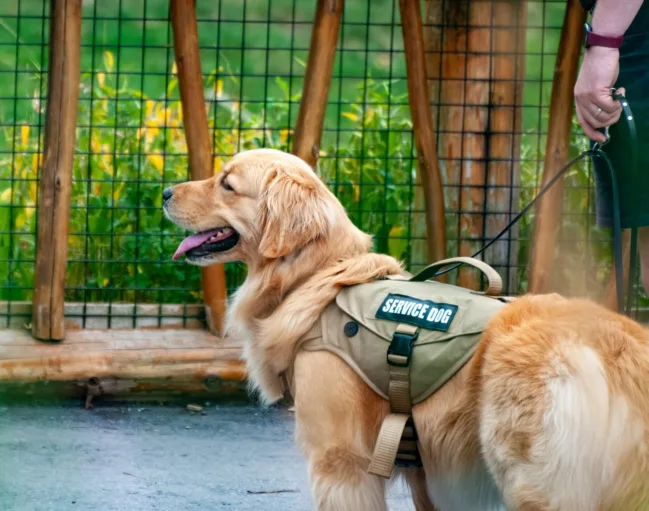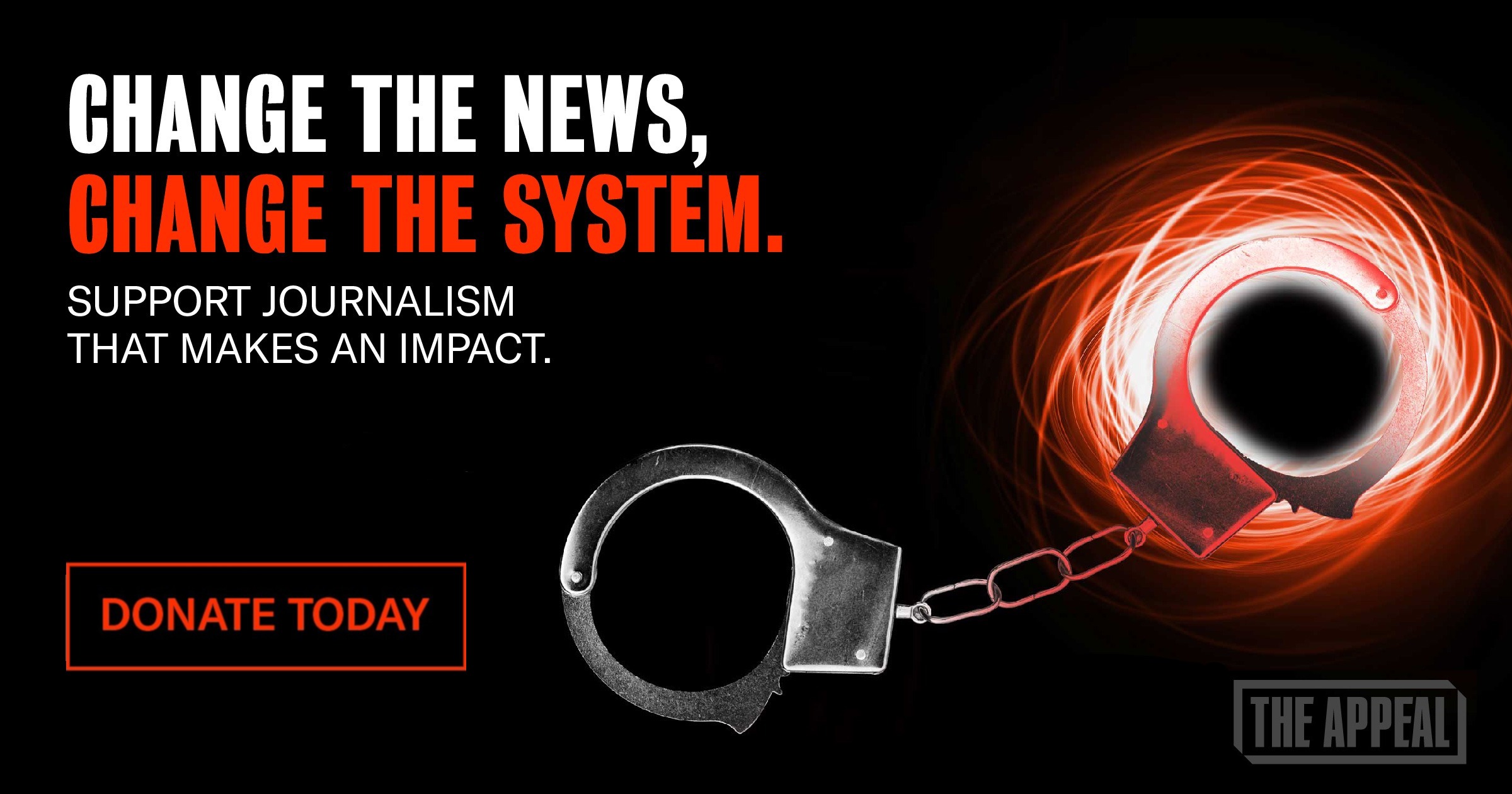Newsletter
How Prison Dog-Training Programs Transform Lives
“We are not just training dogs — we are training ourselves to be better humans.”

Prisons are designed for control, not compassion. Rows of razor wire, towering walls, and unyielding steel doors remind us we’re meant to be forgotten. For those of us serving life and long sentences, the situation is even more bleak.
Of the few rehabilitative programs available, fewer still are accessible to long-term prisoners. Opportunities for growth, healing, or contribution are nearly nonexistent. Investment in our lives is considered worthless, and states generally see us as waste in a landfill. Yet, in this environment of deprivation, a powerful ally has emerged: dogs.
In at least 290 prison facilities across the U.S., imprisoned people can join programs to shelter dogs and train them to become service animals or otherwise prepare them for adoption. Studies confirm what many incarcerated dog handlers already know: Prison dog programs work.
A 2022 article in Applied Developmental Science argued that training dogs helps imprisoned people feel hope for the future and develop healthy senses of responsibility.
“This experience may thereby help instill a sense of purpose for their time served, and may ultimately help promote a more prosocial, ‘anti-criminal’ identity that further fosters connection with prosocial peers,” the piece states. It adds: “In a DTP [dog-training program], participants do not just talk—or receive information—about taking responsibility, but they practice being responsible and caring each time they interact with their dog.”
Likewise, a 2022 piece in the International Journal of Environmental Research and Public Health said that, even though most prison dog-training programs are not designed to help rehabilitate people, the process occurs anyway.
“They have no explicit therapeutic aim and do not incorporate therapeutic techniques; instead, they are focused on training the dogs and the dogs’ well-being,” the authors wrote. “Nevertheless, they are thought to contribute to rehabilitation and to improving psychological functioning, and they even seem to have a positive cost-benefit analysis.”
As participants in these programs, we don’t need studies to show us how valuable they are. We’ve lived it.
Aaron’s Story: From Street Life to Second Chances
Before I was a prisoner, I was a troubled teenager. By age twelve, I was in the throes of addiction. At thirteen, I became a dealer and gang member. An older generation of hustlers taught me the ‘game’—an ideology of survival at the expense of others. That people outnumber opportunities and therefore must be exploited.
I’m also a descendant of generational trauma. My mom struggled with addiction and mental illness until, in a moment of deep despair, she ended her life. My father manufactured meth and abandoned us when I was 3 years old. I was raised by the streets and arrested at nineteen, having never read a book from cover to cover.
I spent my first four years behind bars in a dirty jail cell, never seeing the sun, never touching the grass, and never hugging a loved one. Eventually, though, I met Riley: a dog as broken as I was. Riley was a rescue with a rough past. He had been abused, abandoned, and left fearful of humans. When I first took him into my cell, he trembled in the corner, refusing to eat or make eye contact. I understood his pain. I had spent years like that, too.
Over weeks and months, I worked to gain his trust. I fed him by hand, spoke softly, and let him come to me on his terms. The day he finally wagged his tail when I entered the room, I felt something I hadn’t experienced in years—hope. I realized that I could help others and make a difference. Riley and I healed together. As he learned to trust again, so did I. When I trained him to respond to commands, I learned patience, responsibility, and discipline—skills I had never developed in society. Eventually, Riley graduated from the program and was placed with a disabled veteran. Saying goodbye was bittersweet, but I knew he was going on to change someone else’s life. And for the first time, I felt like I had done something truly good.
Randy’s Story: Just a Boy and His Dog
For twelve years, I walked through prison as a ghost — seen by everyone, known by no one. My name was a number. My presence was an afterthought. That all changed in 2016 when I became a dog trainer.
The moment I put on that vest, I wasn’t just another prisoner anymore. People—staff and prisoners alike—learned my name. They greeted me with warmth and a smile instead of the state-issued scowls endemic to prison. They even remembered my dog’s name, Maddie, offering her the same kindness they now offered me.
What amazing superpowers dogs possess! They serve as social bridges and four-legged conduits for joy in places where it’s in short supply. I’ve heard it said that dogs make us better humans. I saw hardened men smile, guards momentarily drop their defenses, and chaotic environments transformed by a single wagging tail.
More than anything, training dogs has given me a sense of renewed purpose. It allows me to contribute to society and give back in a way that matters. Every time I help a dog become a service animal, I feel like I am undoing, even just a little, the harm I’ve caused in my past. I must admit, however, that it is also a personal therapy for me that helps me cope with my lengthy prison sentence. It takes me back to those unspoiled moments of my childhood—back before I was convicted of felony murder at the age of nineteen—when I was just a boy with his dog.
More than Rehabilitation: Redemption
Prison dog programs are more than rehabilitation tools. They challenge the very design of the carceral system. If prison is meant to break people, then dogs prove that healing is possible, even in here. For many of us, these programs are the first time we have ever felt unconditional love, responsibility, and trust. We are not just training dogs—we are training ourselves to be better humans. Because of the dogs, we are no longer invisible, and maybe, just maybe, we can show others that we’re worth the investment, too.

ICYMI—From The Appeal
People detained in Vermont’s prisons for U.S. Immigration and Customs Enforcement and U.S. Customs and Border Protection struggle to call their families and have been exposed to physical violence.
In The News
The vast majority of the 238 Venezuelan men disappeared to an El Salvadoran prison had no criminal records. [Cecilia Vega / 60 Minutes]
At least 50 Arizona State University students have now had visas revoked. One student remains in detention, and has been locked up for about 10 days. [John Washington / AZ Luminaria]
Federal agents detained and interrogated Amir Makled, an attorney representing a pro-Palestine protester, upon his return from a trip to the Dominican Republic with his wife and children. [Tresa Baldas / Detroit Free Press]
A mother and her three school-aged children abducted by ICE on March 27 in Sackets Harbor, New York, have been released after an outpouring of protest from locals. [Noah Hurowitz / The Intercept]
The State Department has revoked visas from hundreds of international students. Inside Higher Ed has compiled a data set of colleges and universities across the nation that have indicated visa revocations of current students or recent alumni. [Ashley Mowreader / Inside Higher Ed]
